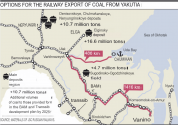Interesting and rather balanced article - some of the obvious problems (like overleveraged property market, rising inequality) are mentioned, but without a typical "ChYnA's LeHmAn mOmEnT REEEEE" Western liberal copium screech. Also a few spot-on (imo) quotes:
In fact, every stage of China's rapid rise has been accompanied by a chorus of Western critics who appear either unable or unwilling to believe that its model of development could be successful.
They have instead continually searched for flaws that, they hoped, would either slow the country's economic growth or lead to a USSR-style collapse.
In the 1990s, for example, it was in vogue to argue that China's reforms would fail due to entrenched vested interests. By the 2000s, this had evolved into the theory that its low-cost export-orientated model was unsustainable. In the 2010s, critiques revolved around the perils of China's debt-fueled growth, capital misallocation and expectations of an economic hard landing.
Despite all these fears, China has powered ahead. Its gross domestic product, for example, has increased more than tenfold since Gordon Chang's "The Coming Collapse of China" was published in 2001. It is curious, therefore, how persistent the permabears remain, despite all the evidence that their earlier negative views were misplaced or exaggerated.
Many such critics, however, appear driven more by ideological differences than economic realities. They view China very much through the prism of it being a rigid command-and-control Communist system doomed to follow the Soviet Union to eventual failure, thereby proving the superiority of Western systems. And this entrenched expectation subsequently frames the way they instinctively, and negatively, interpret the actions of its government.



.jpg?ext=.jpg)